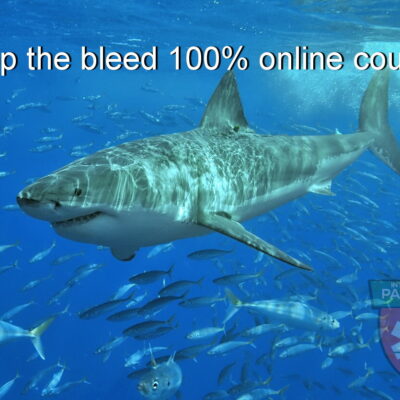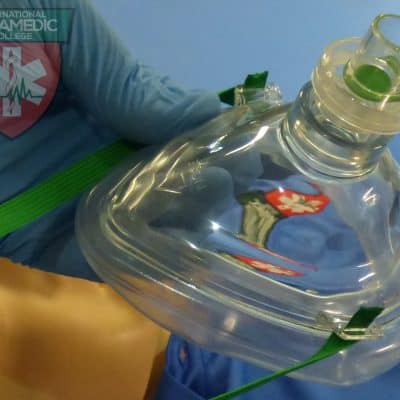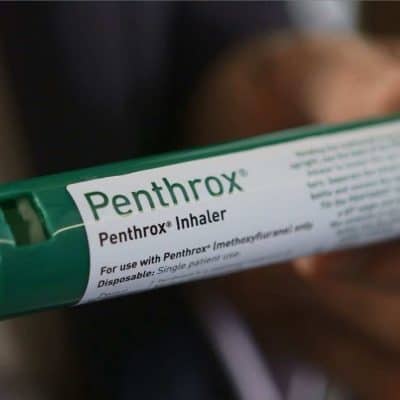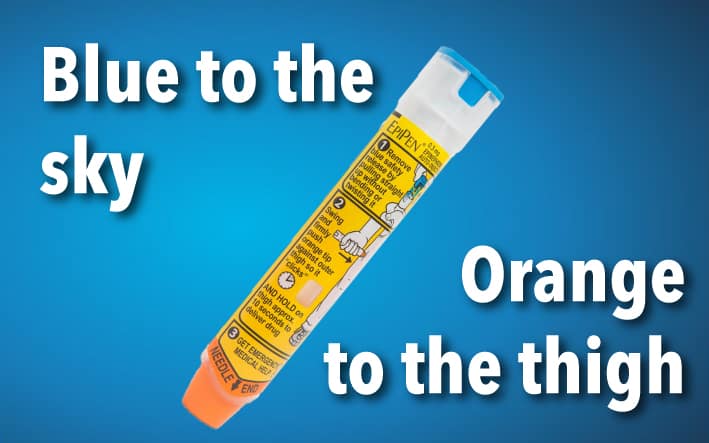
A Brief History of Anaphylaxis
The year was 1901 when two French physiologists were given a task to study the venom of a jelly fish which we all commonly call the Blue Bottle (physalia physalis). The experiment they conducted was one that would turn out to be one of the most significant medical advances in the history of medicine.
Charles Richet and Paul Portier decided they would inject some extracted venom from the Blue bottle jelly fish into various animals to test the potency; initially they used guinea pigs and rabbits but would later use dogs.
Upon clinical trials they would inject small doses of the marine creature’s venom into the canines which initially was thought to serve as an immunisation to protect the dogs from future exposures.
To their surprise quite the opposite happened with a second dose regardless of the size would lead to dramatic symptoms and often the animal would die.
Richet described this as “aphylaxis” phylaxis coming from the Greek word for protection and a “meaning without” this was later changed to the word we use medicine today “anaphylaxis”.
They determined that this reaction was an immune response and their discovery was announced in two papers published in 1902 in the Comptes Rendus de la Societe de Biologie. (Reports of the Biological Society)
This would be what is known today as an allergic reaction and although Richet and Portier never coined this phrase, as it came several years later by an Austrian pediatrician, the two Frenchman are still considered the fathers of this discovery.
Interestingly Portier left the research work to continue on with his own laboratory findings, whilst Richet further advanced his studies in the field of anaphylaxis and in 1913 received the Nobel Prize in the field of Physiology for his contribution into this subject matter.

Adrenaline – its discovery and early use in Anaphylaxis
By the middle of the 18th century physicians were starting to grasp some of the human physiology that had eluded them.
It was around the same period that our two French Doctors where experimenting on dogs that an American physiological chemist, John Jacob Abel had discovered and isolated the now known hormone as epinephrine.
A year later in 1902 an American/Japanese Biochemist Jockichi Takamine had now isolated a pure crystalline substance from the Adrenal medulla which he named Adrenaline and to which he patented this product through a company Park Davis & Co laboratories
And in 1904 a German chemist Friedrich Stolz became the first to synthesise the hormone.
In its early years of administration for anaphylaxis adrenaline was given in packs via a glass vial with a syringe, which could result in quite an unmetered and messy dose.

EpiPen® and EpiPen® Jr (epinephrine) Auto-Injectors (CNW Group/Pfizer Canada Inc.)
The introduction of the Epipen
The epi-pen changed the way adrenaline is delivered to a patient by using a retractable needle device.
Sheldon Kaplan had a B.S in mechanical engineering who worked for a company called Survival technology, and in 1973 was contracted by the Pentagon to invent a device that could be used to self-administer a nerve gas antidote for the U.S military, which he indeed successfully performed, and he named it the combo-pen, later that year he would use the same glass spring loaded system for the delivery of adrenaline which was for consumers and titled it the Epi-pen.
Since the Epi-pens introduction to the open market in 1980 it has been regarded by the medical society as an essential and vital tool to combat anaphylaxis and severe asthma and has saved countless lives in the extremeness of these debilitating circumstances.
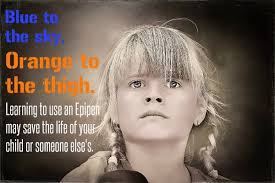
Common Anaphylaxis training options in Australia
Learning to safely administer the Epi-pen via undertaking a first aid course or anaphylaxis training training is common practice in Australia today and individuals, companies, schools, restaurants, childcare and family day care workers seek out training organisations for training in the recognition of anaphylaxis and use of the epipen in its management for their staff in a number of different ways
Free Online Anaphylaxis Training
There is a free online anaphylaxis learning which allows you to develop your knowledge and to gain a certificate at the end of the online training.Developed by The Australasian Society of Clinical Immunology and Allergy (ASCIA) which was established in 1990 as the peak professional body of clinical immunology/allergy specialists in Australia and New Zealand, this can provide a record for industry CPD training or just improve your knowledge of the subject. They also have great specialist resources on their website. They have an extensive and really informative FAQ page
Click on this link to complete the free online course in anaphylaxis training.
http://www.allergy.org.au/patients/anaphylaxis-e-training-first-aid-community
How to get accredited Anaphylaxis training for childcare centres and Family Day Care?
We cover anaphylaxis, asthma, and first aid training for this cohort or individuals who would like to develop their knowledge
The Australian Children’s Education & Care Authority (ACECQA) the peak body for Family day care and childcare centres has endorsed HLTAID012 Provide an emergency first aid response in an education and care setting in 2021 as meeting their requirements for anaphylaxis, asthma, and first aid training. Click on this link to complete the free online course in anaphylaxis training. http://www.allergy.org.au/patients/anaphylaxis-e-training-first-aid-community
CPR and Anaphylaxis training for NSW Government Schools
 What Anaphylaxis training do NSW Government schools do?
What Anaphylaxis training do NSW Government schools do?
Recognition and Management of Anaphylaxis Training is often conducted regularly by NSW Government schools. Called RAMOAP training for short, all Department of Education, DoE NSW government schools can arrange face to face CPR and Anaphylaxis training annually through an approved panel of registered training providers (RTO’s) that follows the protocols developed with Sydney Hospital to issue RAMOAP Certificates (Certification) required by all NSW Government Public and High school’s each year.
Recognition and Management of Anaphylaxis Program (RAMOAP) is a short, practical skills-based session provided for NSW government school staff who are required to complete this lifesaving training every year and is tightly focused on a clinically researched approach using the action plans to deliver scenario based practical training onsite.
Also, NSW school staff are required to complete the Department of Education’s mandatory ‘Anaphylaxis e-learning’ course every two years. It is often done in conjunction with CPR training at schools.
Contact Form
Alstonville – Ballina – Bangalow – Brunswick Heads – Byron Bay – Casino –Coffs Harbour– Evans Head – Grafton – Iluka – Kingscliff – Kyogle – Lennox Head – Lismore – Maclean – Mullumbimby – Murwillumbah – Ocean Shores – Yamba


